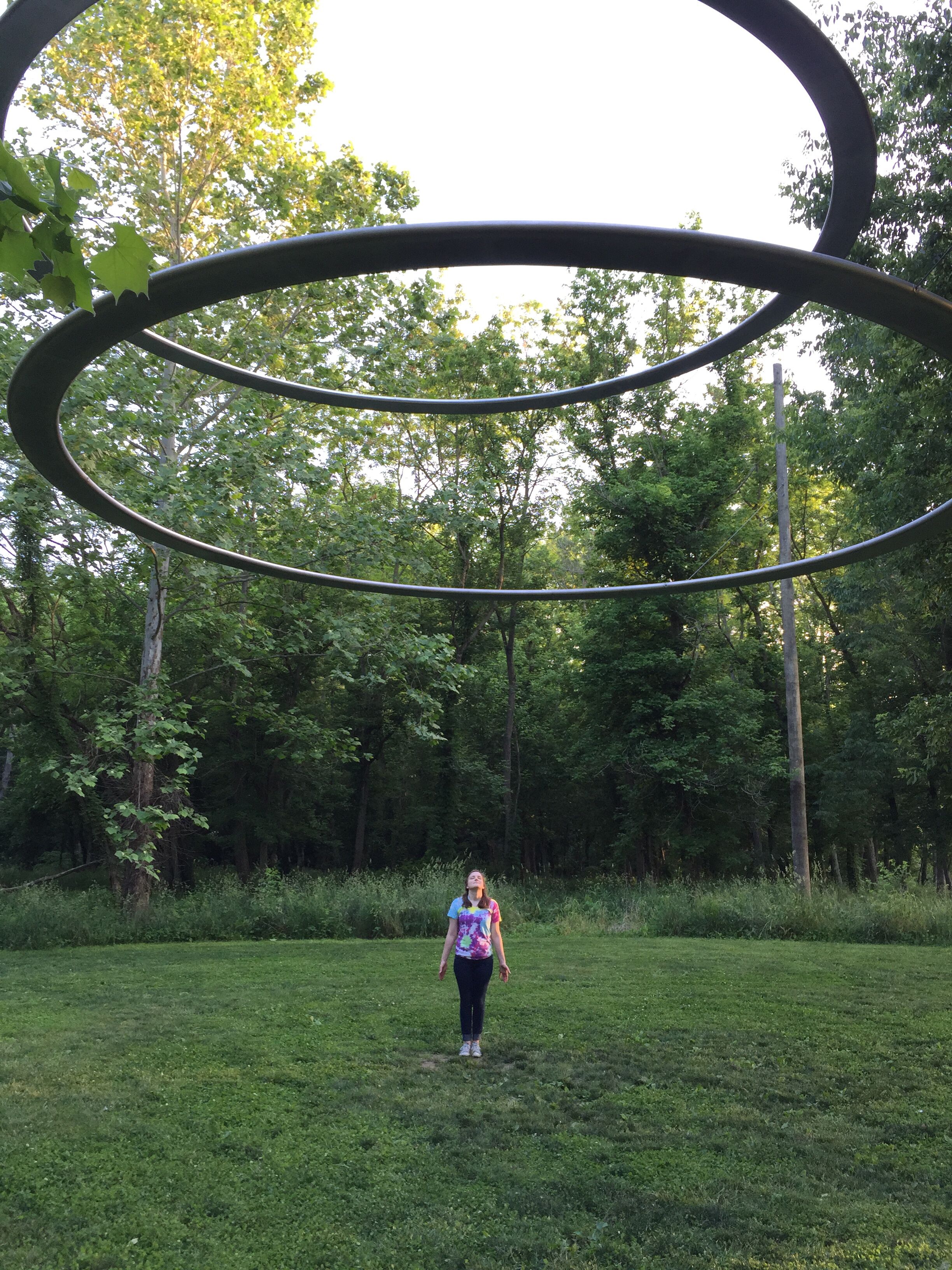The Non-designer's Guide to the Landscape Architecture Workplace
/By Katie Schneider
When I applied to be the office coordinator at GreenWorks, I figured I had the upper hand. I’d been around landscape architecture since I was fifteen (my brother’s a landscape designer). After starting at GreenWorks, however, I quickly learned I was not much further along than people who think landscape architecture is the same as landscaping maintenance. I found myself listening to conversations around the office feeling like that scene in Stranger Things where Winona Ryder’s character is trying to decipher messages through holiday lights strung up on her wall.
Katie (right) on an early field visit
Even though I knew what landscape architecture was, and could explain it to someone in general, my educational background is definitely not in anything related. I have a bachelor’s degree in chemistry and in my free time I volunteer at OMSI (Oregon Museum of Science and Industry) doing chemistry experiments with kids. I have been a part of communities who live in the science world and think like scientists. As much as scientists are wonderfully creative and critical thinkers, rarely is their creativity displayed in drawings or graphics that don’t involve hexagons (I am looking at you organic chemists). So, when I’m sitting in a room with people at GreenWorks who come up with these incredibly creative designs, I can’t help but be amazed.
For all you non-designers out there who might find yourselves in conversation with a landscape designer or landscape architect, here are a few pieces of advice to make you seem like you halfway know what’s going on.
Learn the Job Titles
Landscapers build and maintain designs created by landscape designers and landscape architects.
Landscape Designers are exactly who they sound like: professionals who design landscape projects.
Landscape Architects are people who have pursued a formal education in, and have been through state board licensing for, the practice of landscape architecture. It is important to note, those who are licensed as landscape architects most definitely don’t like being called an architect. It is always landscape architect, even if it takes you more time to say.
Be Prepared for Landscape Architecture Philosophy
If you think wildflowers are weeds, you are most likely wrong, depending on who you ask of course. You could ask one designer and they would say, “of course they aren’t weeds!” Then ask another and find yourself in a philosophical conversation about the definition of a “weed.” Before you know it, you find yourself thinking about weeds more than you ever thought was possible.
Study the Vocab, But Not Too Much
If reading landscape architecture words aloud is involved, be sure the landscape architect is the one reading, as opposed to you. You will come across terms like swale or Xeriscaping and have no idea what it is, much less how to pronounce it. Also, when designers and landscape architects begin to use terms you are fairly confident aren’t actually words (e.g. “gabion wall”), just nod your head and use context clues to figure it out; seventy-five percent of the time it will work. Eventually you will learn enough to recognize the difference between an industry term and jargon!
You Will Start to Form Stormwater Infrastructure Opinions
If part of a project looks neglected or like a wild garden, the designer didn’t forget about that spot, it’s probably a stormwater treatment area. Since working here I learned there are what seems like 9,000 different types of stormwater infrastructure. For an example of one kind, check out the awesome green wall we designed in this shameless plug (not to be confused with this kind of plug).
To all you landscape designers and landscape architects out there, keep teaching us non-designers about these fun things, even when we are clearly just trying to remember simple things like the water cycle we learned in 2nd grade. Before you know it, we will be right there with you appreciating the aesthetics of that good-looking fence or trying to figure out whether or not a tree is a ponderosa pine, because we all know how hard it is to tell those pine tree species apart.




